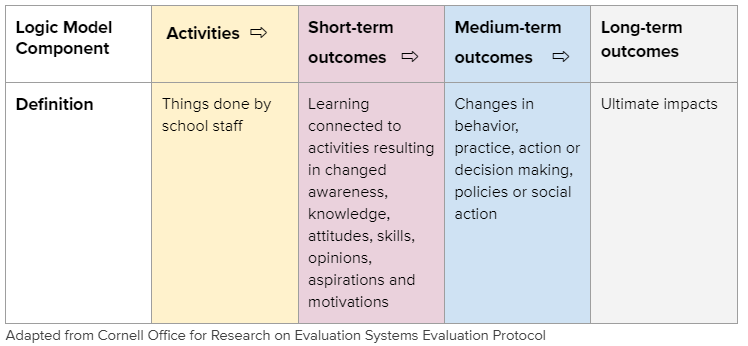A roadmap for MTSS implementation in a school is a comprehensive plan that outlines the steps, timelines, resources, and goals necessary to establish and sustain an effective MTSS framework. Strategies for integrating data-based decision making, providing differentiated instruction, implementing evidence-based interventions, and monitoring student progress should be included.
The roadmap should also address the implementation of professional development, family engagement, and communication strategies. Input from relevant stakeholders is crucial, and the roadmap should be regularly reviewed and updated based on data-driven feedback and continuous improvement, with the ultimate goal of ensuring all students have access to high-quality instruction and interventions.
Key objectives of road mapping:
- What actions are needed based on the needs assessment process?
- What systems and structures are currently in place and what is needed to support implementation?
- What systems are in place for ongoing data collection, monitoring, and evaluation?
- How will we recognize efforts and celebrate successes?
Actions needed based on the needs assessment process
The MTSS process involves using assessment data to inform the design and implementation of systems of support at the school site. In order to effectively utilize assessment data, the district MTSS team must first analyze the results of the intake and needs assessment, which includes disaggregating the data.
Data analysis
During the analysis, the team must identify key findings or themes that emerge from the data. The assessment findings will help determine what actions are needed. For example, if the data shows that a particular subgroup of students is struggling with math, the team may need to provide additional math instruction or support to that group. An effective method for analyzing information is to follow a discernment process.
This process includes reviewing the data as a team, focusing on the needs assessment and organizing the themes into categories. The team will engage in four key phases of data analysis:
- RESEARCH: What are the trends in the data? Look for areas of concern and areas of success.
- RECALL: Why do you think these trends occurred? Use the trends in the data to look for possible reasons that the trends occurred.
- REFLECT: Based on what you recalled, what practices should we continue, modify, or remove? Think about what practices the data supports and what it does not.
- RESPOND: What actions can we take to move us forward? These responses should tie directly to what was discovered in the reflection process.
Outcomes of the data analysis process should include specific and measurable goals that may either seek to implement new systems or align with existing mission and vision. Implementing new systems may include providing professional development for teachers, creating collaboration time for teams, and providing resources to support the new system.
Appendix 7: 4R Protocol Template with SMARTIE Goal can support the data analysis and goal-writing phase.
Logic Models
Another process to set goals from data is utilizing a Logic Model which focuses on using a continuous improvement cycle. An important starting point in deciding what data to monitor is to consider existing goals (i.e., SPSA) as well as mission and vision, and then aligning these goals to measurable outcomes.
An outline for a logic model is contained in the table below.
Logic models can be a helpful tool for organizing thinking about the connection between implementation and outcomes as well as how short-term outcomes are linked to medium- and long-term outcomes. For example:
- Medium-term outcomes may be connected to quantitative measures of behaviors or practices relevant to the hoped for outcome. These might include increases in school connectedness or improvements in academic performance.
- Long-term outcomes could include larger ultimate impacts like increased graduation rates or staff retention.
Building the site’s comprehensive plan
Sites may find it useful to consolidate goals from the data analysis process, SPSA plan, and other outcome-based initiatives into one document. Appendix 7: Comprehensive Plan Template can support development of a site’s comprehensive plan.

